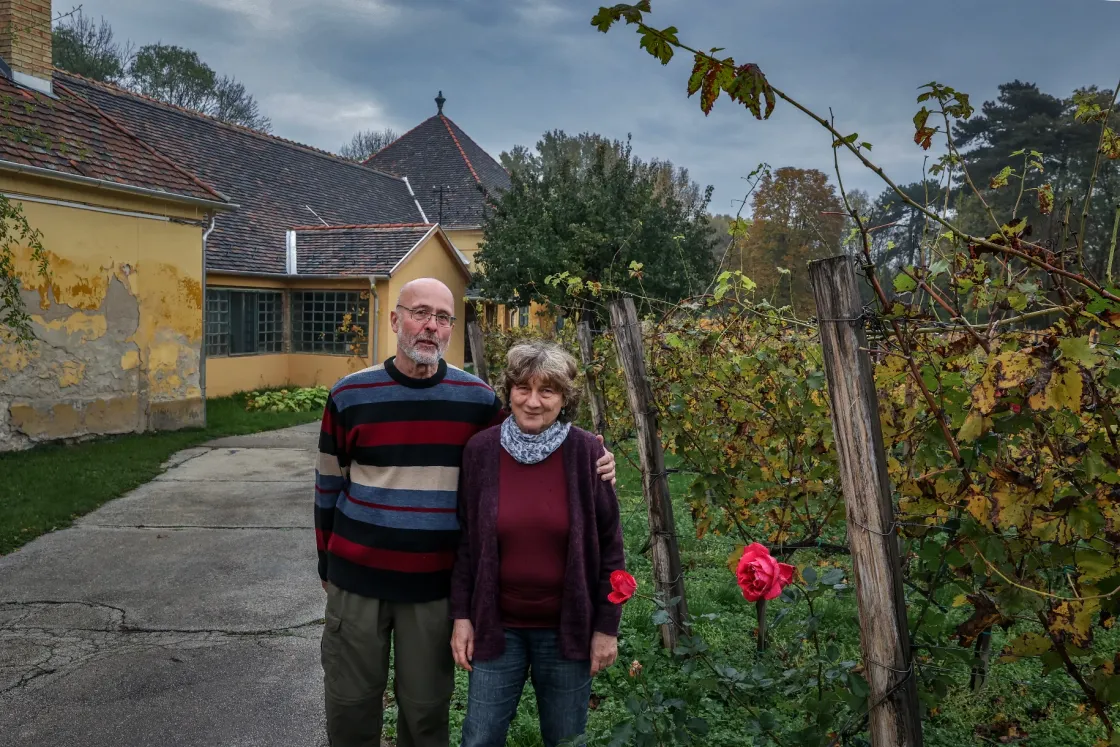
A family of winemakers fell in love with the former champagne factory that used to belong to the Hungarian noble family of Esterházy. Reviving the building was no small task, as it had fallen into disrepair during the decades of communism, but today it is back to its original function.
Hungary is full of beautiful castles and mansions that had flourished for centuries, but nowadays we are witnessing their disrepair. In the post 2nd World War era, at best, some unsuitable social institution or school was moved into the previously privately owned properties and their new occupants’ use decreased their value. The worst case scenario was that the buildings were abandoned to the elements without any use.
This could have been the case with Tata
The 250-year-old Esterházy champagne factory in Tata could easily have been destined to a similar fate. During the Second World War, its owners, the Esterházys, fled as far away as Tasmania, Australia. During the socialist era, the building, the garden and the extensive cellar system were used by eight different owners, under eight different lot numbers. One of the occupants was even allowed to build a cold-storage warehouse for cooling saltwater fish inside the historic building. It is hardly necessary to stress the damage caused by the temperature difference of the minus 20 degrees Celsius 'house within a house' and the condensing moisture.
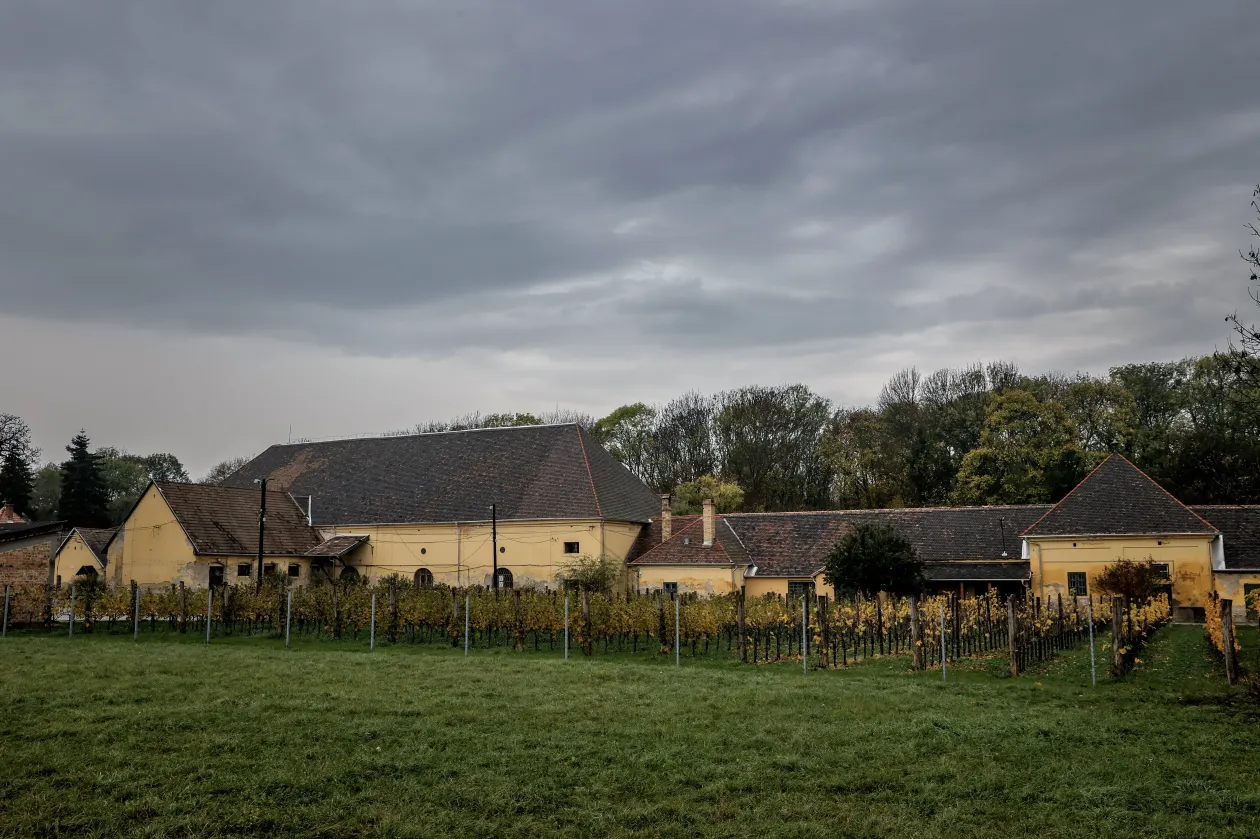

But this is a story about one of the rare exceptions where the building has been saved. Mihály Séra, an engineer and economist who had previously worked in the wine business, and his family (brother, wives and all their children) fell in love with the estate and have been restoring it little by little. By now they have even succeeded in restoring the building to its former function of producing champagne – although not enough for sale in retail outlets yet, but enough for tastings and other events. When we visited the Tata property, we were in for several surprises.
Built by a star architect
Jakab Fellner was the Hungarian star architect of the late Baroque period. He had no training, but the Esterházy family, which was the wealthiest of the Hungarian families, fell in love with his work, and this family did a lot of building. Fellner's work can be seen in over 200 buildings in Hungary and the surrounding area (for example in the „Felvidék” which is in today's Slovakia). He began building the complex in Tata in 1772 (exactly 250 years ago), after the Esterházy family commissioned him to design a building suitable for distilling spirits.
Fellner's talent and the Esterházy family's financial resources led to a grandiose solution, even for an industrial building. Indeed, the noble family of counts was indescribably wealthy: they owned 2-3% of Greater Hungary and the territories remaining after the Treaty of Trianon, which meant that the amount of Hungarian land they possessed equaled the size of a smaller county.
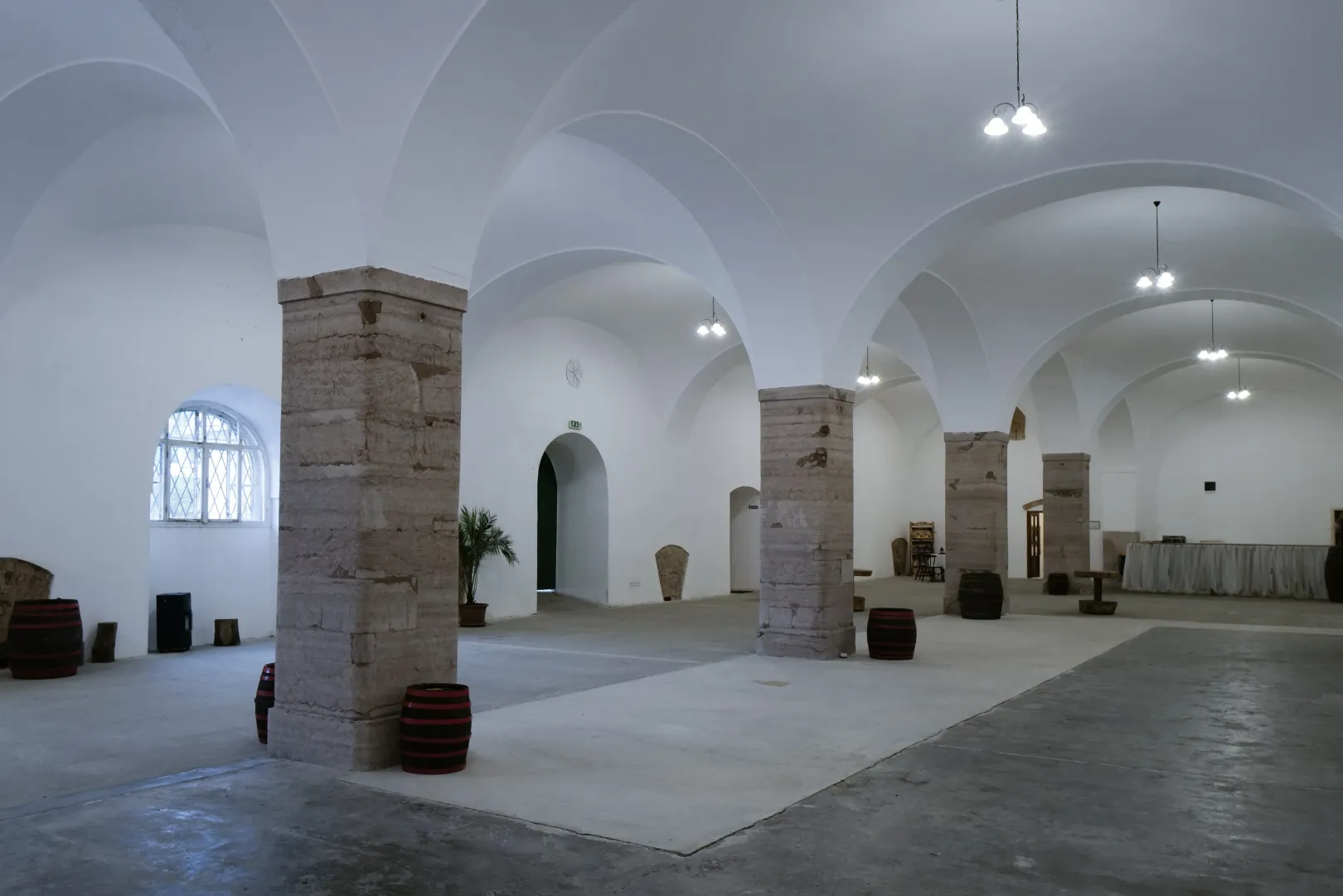
In any case, in the present-day ballroom, which was once the production hall, they used to brew spirits in open vats on wood stoves, on an area of 500 square meters.. Excellent ventilation was essential for the removal of all kinds of waste (soot, smoke, steam).
We are in the neighbourhood of the English Garden (Angolkert) in Tata, which is an 80-hectare area filled with exotic trees, established in the late 1700s. Tata is famous for many things: its lake, its castle and the training camp for Hungarian Olympic athletes, and those familiar with these sites will not be surprised to hear that the former Esterházy champagne factory is located next to the latter.
A huge 20,000-cubic-meter labyrinth of cellars, with a constant temperature of 11-12 degrees runs under the building and the garden. As one walks around, it's very hard to imagine how they were able to carve this vast basement system out of clay 250 years ago, using only hand tools (pickaxes, shovels, wheelbarrows).
Everybody had a hobby
The layman might think that such a hyper-rich noble family visited their properties, went to balls and spent a bit of time running their agricultural property here. But that layman would be surprised to find out how active and enterprising the Esterházys really were. We won't go into all the details of this extensive family, but the point is that the head of the family who 'ruled' here at any given time was generally well adapted to the opportunities of the times.The cellars – Photo: István Huszti / Telex
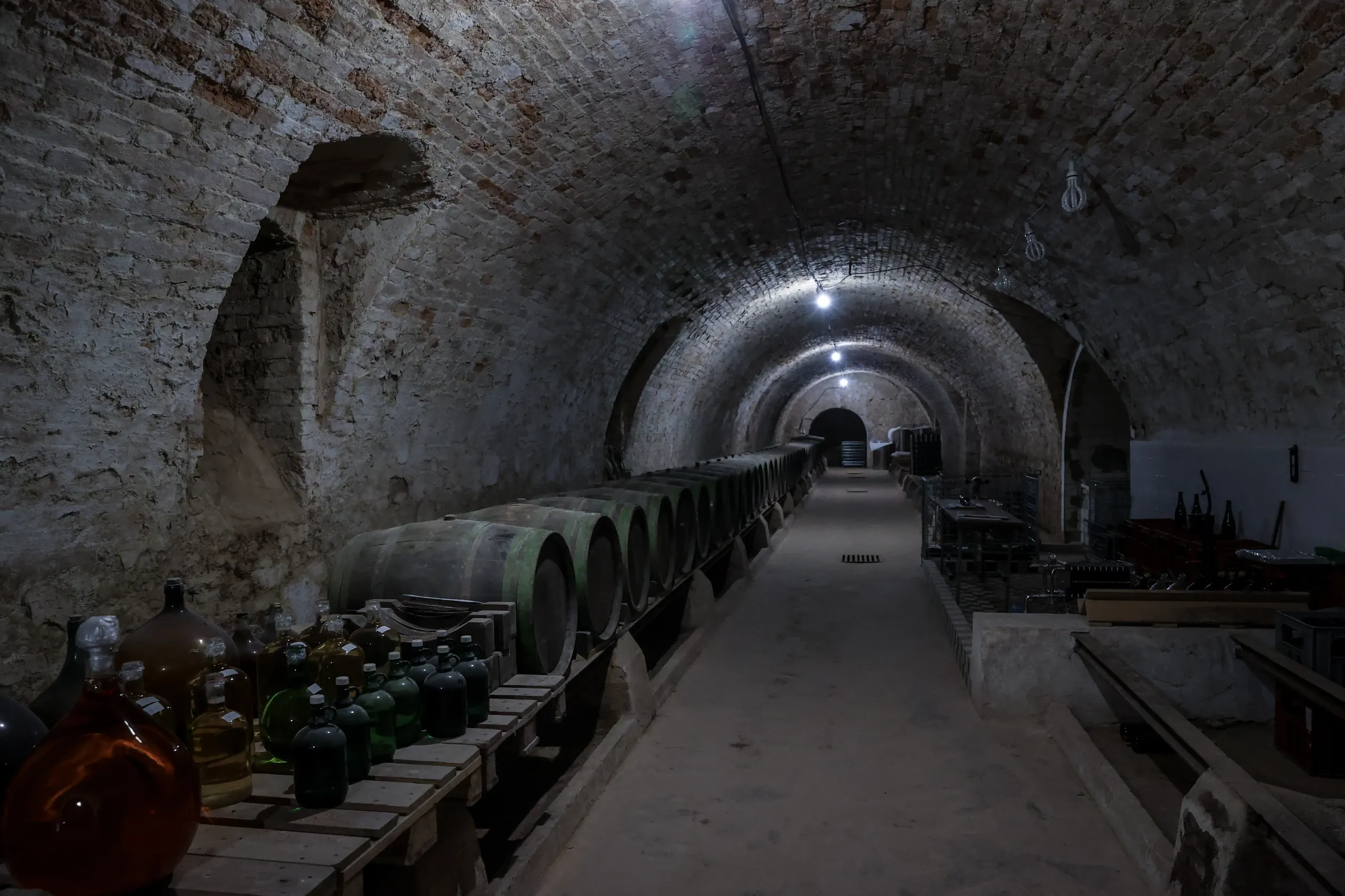
When brewing beer was no longer the privilege of landed gentry, the Esterházys were replaced by the Drehers and Haggenmachers. Tata closed down, but in 1883, when the Budapest-Vienna railway line was being built, the Esterházy family, with their good business sense, arranged for there to be a stop on the estate under the name of (then) Tata-Tóváros. The family quickly built a restaurant so spacious that up to a thousand people could dine there at once.
As successive leaders followed each other in the family, each transformed the estate to suit their own hobbies:
- Count Miklós was a horseman;
- the next Miklós was a theatre builder;
- Ferenc was a „champagne maker”;
- his son, Ferenc was a composer;
- and his son, Miklós, emigrated to Tasmania;
- Francesca Esterházy Blackwell, the daughter of the last count to live in Tata, now lives in Sydney but keeps in touch with the people of Tata.
Equestrian sports, then a factory
When we think of Hungarian equestrian sport, Tata is perhaps not the first place that springs to mind, even though the Esterházys fell in love with the sport 140 years ago. They invited jockeys and riders from England and – perhaps surprisingly – the United States, had horses brought over and hosted horse races at several tracks in Tata for decades.
According to records, the 1899 race was notable for being the first to test the starting gates, but the town was also the starting point for the sensation of the time, the Berlin-Tata 'long-distance' race.
Then came the eve of the First World War, and most of the Anglo-Saxons, who had become enemies, went home, and the center of Hungarian equestrian sport relocated to Alag.
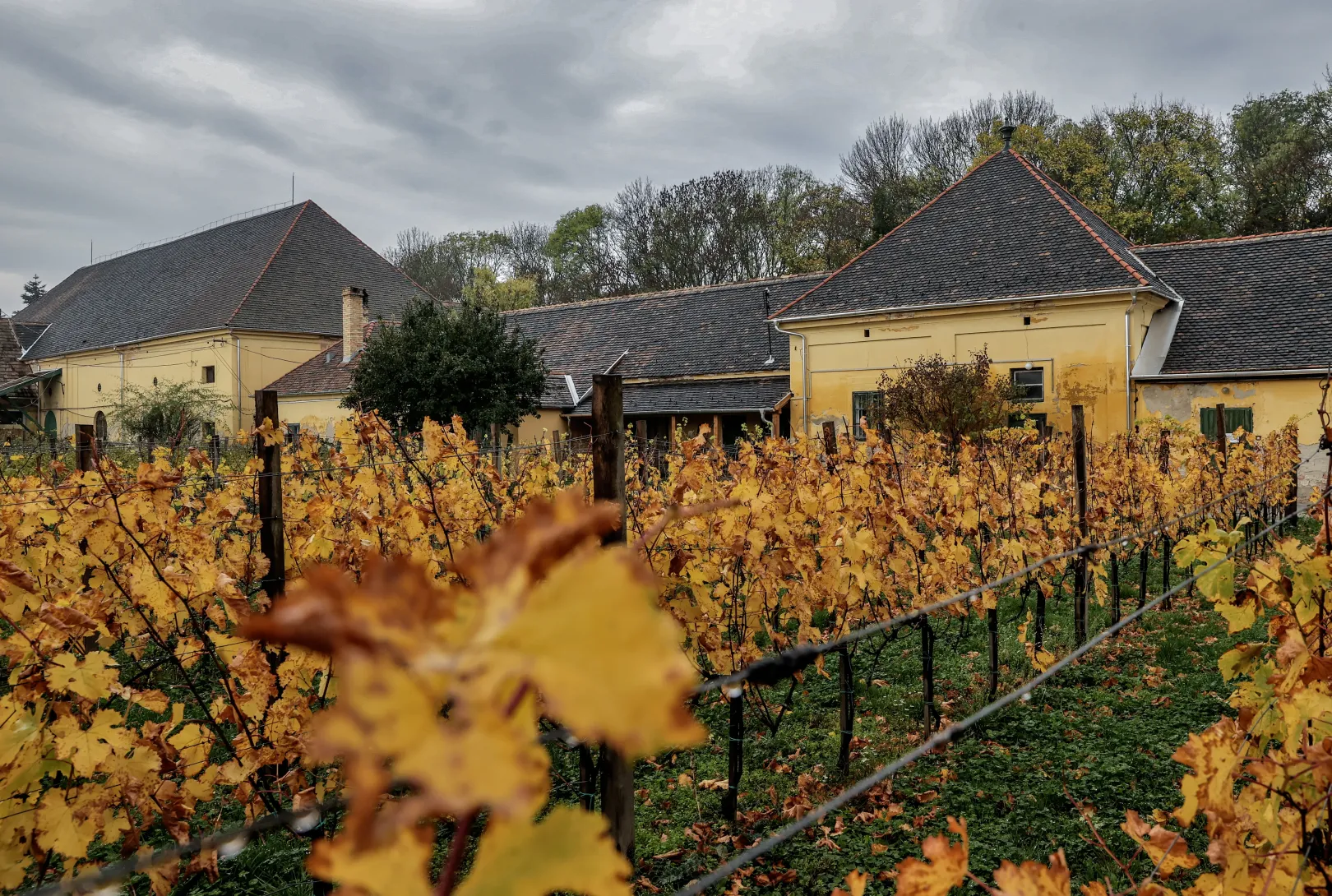
It was previously mentioned that when the head of the Esterházy family looked for new forms of entertainment, all of Tata followed suit. In 1905, Count Ferenc Esterházy, the new head of the family, fell in love with champagne production. He had both the money and the dedication to win the champagne master of the world-famous French Moët & Chandon champagne factory, Emil Hubert for the post of professional manager of the Tata Champagne Factory.
Until his death in 1935, (he is also buried locally) using modern, French technology, Hubert worked on developing the Tata sparkling wine which became an internationally renowned product. The memory of the French master is today preserved in the house in the form of many documents and photographs, and there is even a 100-year-old champagne made by him," Mihály Séra says.
When the Second World War started, everything went downhill. The count's family fled, the building was nationalized and divided into several parts. Champagne production ceased, and the building was used to house a distillery, a wine company, a cold storage, as well as several apartments.
Mihály Séra, who has worked with wine before, but never with champagne, knew about the cellars, got his brother involved in his vision, and in 2001 the enthusiastic pair were able to buy one of the eight parcels (a courtyard, a part of the cellars, and a few domes).
Their wives were stunned when they first arrived at the dilapidated, entirely neglected property. There was a wreck of an old truck in the yard, foxes, and about 200 stray dogs were living in the building and its surroundings, courtesy of a dog breeder, or rather a puppy mill. From there, the cleaning, the demolition and the systematic construction began, and over the next 15 years the family acquired six more pieces of the property, with only one still missing.
We asked the Séras who gave us a tour, whether there was any money to be made from the property, even though its value has certainly increased. They told us that they already have income from a surprisingly wide range of areas, but the actual profitability is still some way off. In any case, the cleaned up banqueting hall serves as the venue for major events (wine tastings, between May and October weddings, St. Martin's Day goose dinners, Christmas concerts).
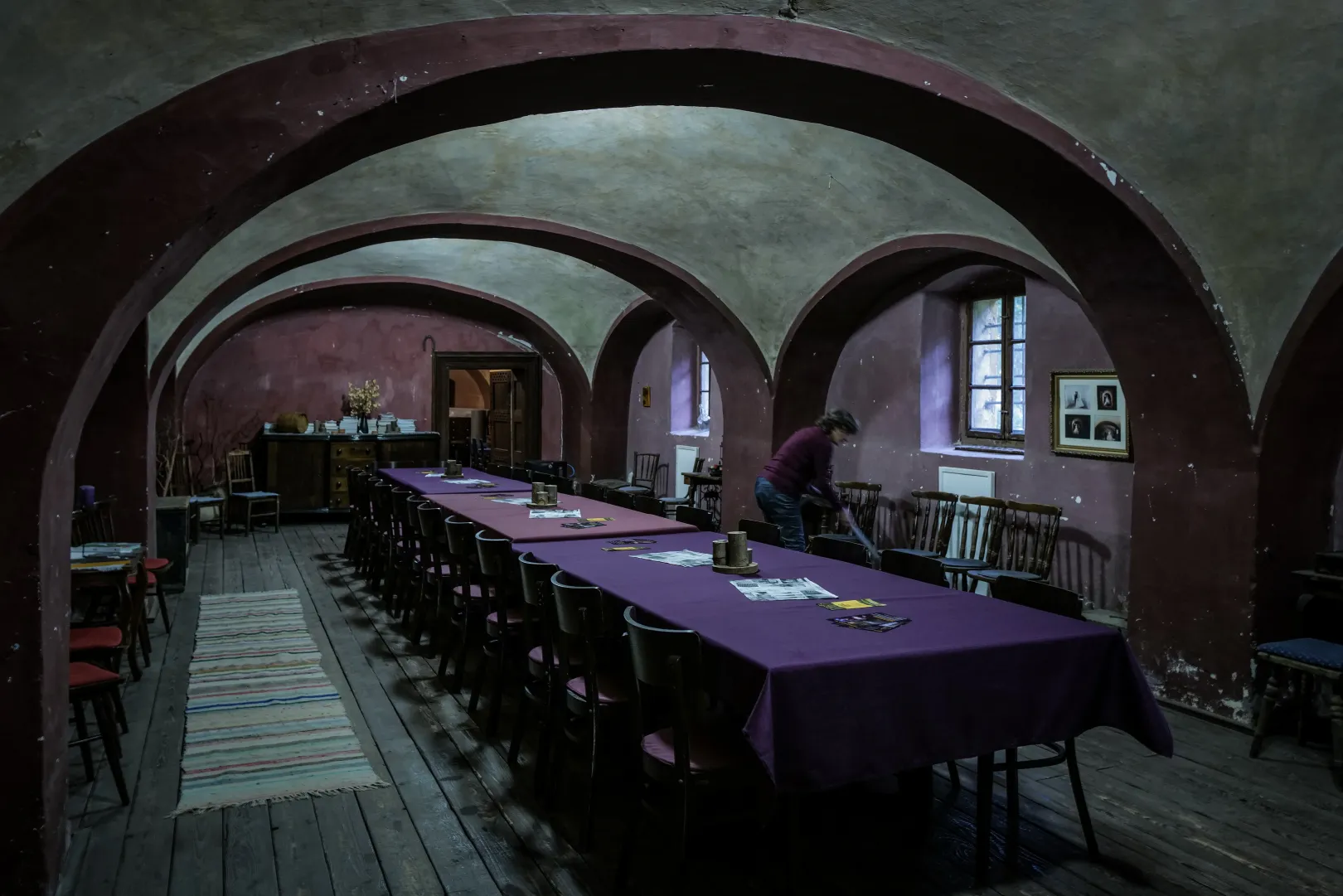
I wouldn't have guessed, but as Etyek (home to Korda Studios, one of Hungary's biggest film studios) is not far away, the building is also used for shooting films, for example the hit series "The Borgias" was partly filmed here. The rooms are sometimes also rented out for team-building sessions, birthday parties and now even classic champagne production has started.
The hall can be heated, although with the current utility prices it's a big question whether there are any events which make that worthwhile. The family had an idea for using renewable energy, but they were not granted permission to cover the 1100 square meter roof with solar panels. A total of 3.5 thousand cubic meters of space would have to be heated, but this is currently a hopeless endeavor.
The champagne
Manufacturing the tasty champagne is an extremely laboursome process. The grapes, as well as the base wine used in the process is their own, but the family also purchases some wine from Zsolt Maller, who runs a winery in neighboring Kocs. As the Séras and Maller have a shared love for champagne, they are developing the technology together. Production started six years ago. Since aging takes at least 1,5 – 2 years, the champagnes made from the harvest of 2019 were first offered in 2022. They are not yet selling their product made with traditional methods outside of the property, but it is quickly consumed at tastings and other events they host.

Classic champagne production is all about the base wine, sugar and yeast in the bottle going through the necessary processes. It is, however, not easy to systematically and regularly keep turning the bottles on a stand and then, manually remove the residue from each bottle (which are under the same amount of pressure as 3 car tires) without losing the precious liquid.
The solution is a minus 30-degree-Celsius saline solution, which creates an ice plug that has to be removed with a quick movement, bottle by bottle, of course. If the workers are skilful, only a small cloud of carbon dioxide will escape.

“If the workers are skilful” – we wrote. But the workers in the Tata champagne factory are the family. Although back in the day they used to work with wine, they have now also learnt how to make champagne. And just like all the other jobs around the property, champagne production is done exclusively by members of the Séra family.
If you enjoyed this article, and want to make sure you don't miss similar ones in the future, subscribe to the Telex English newsletter!